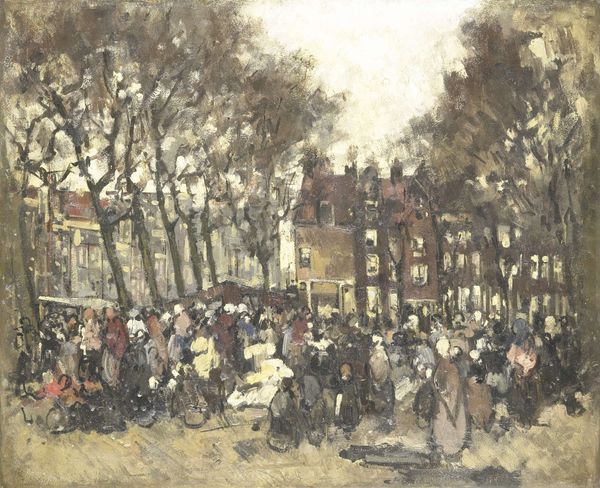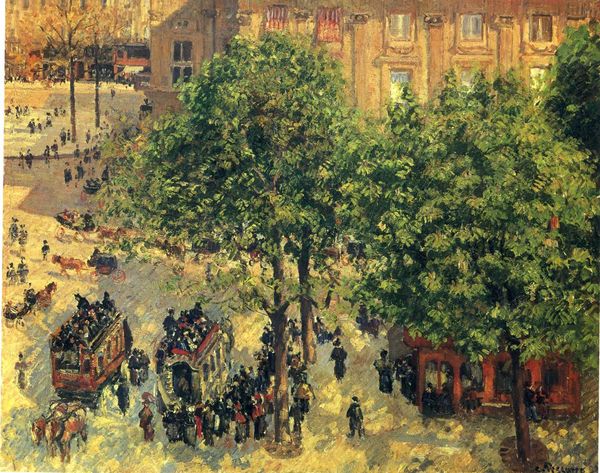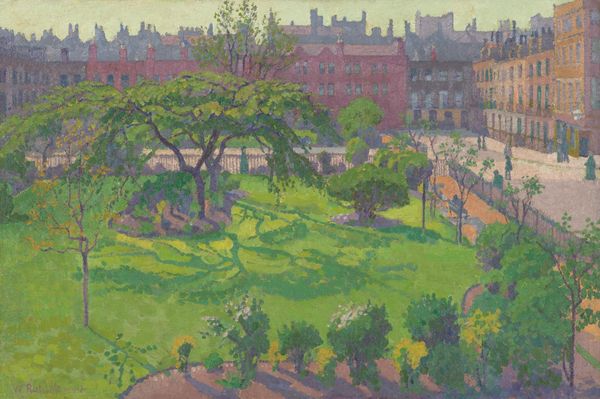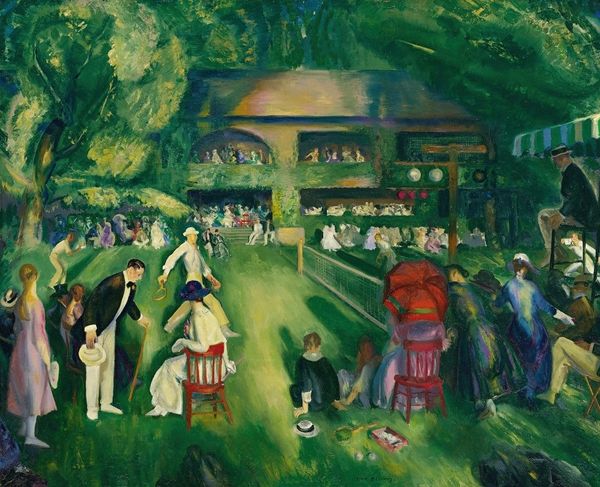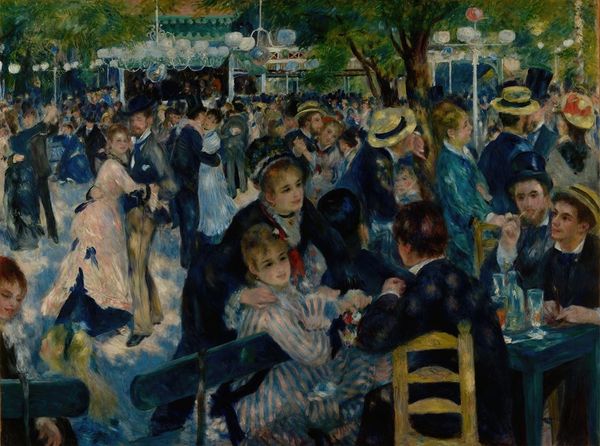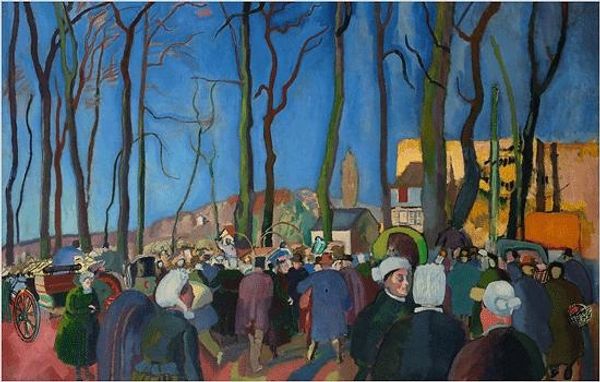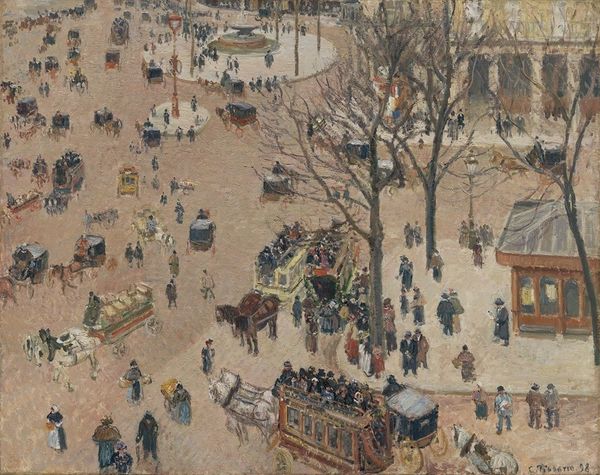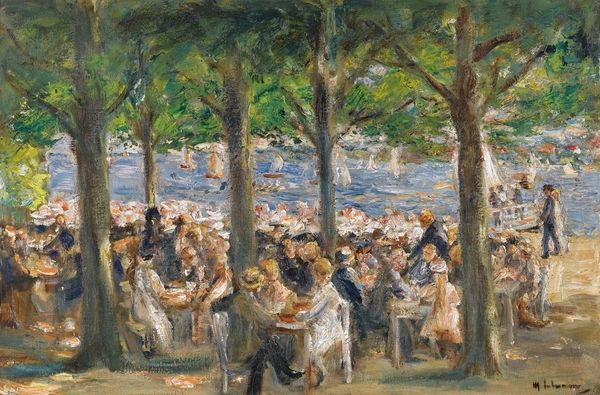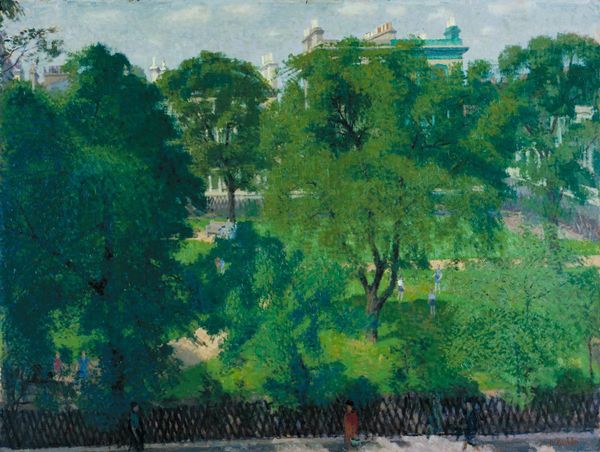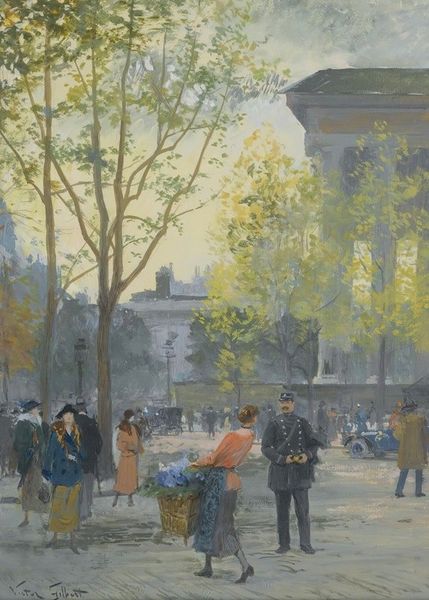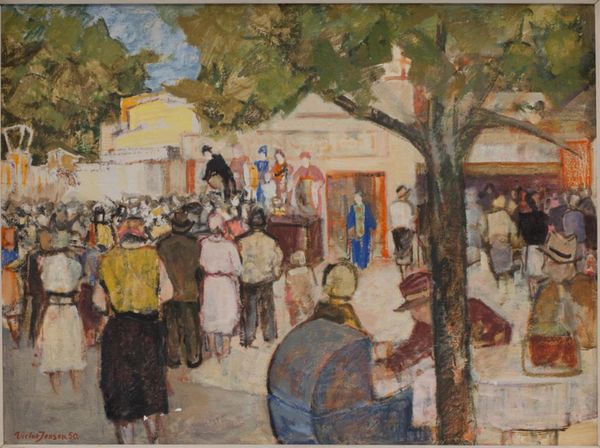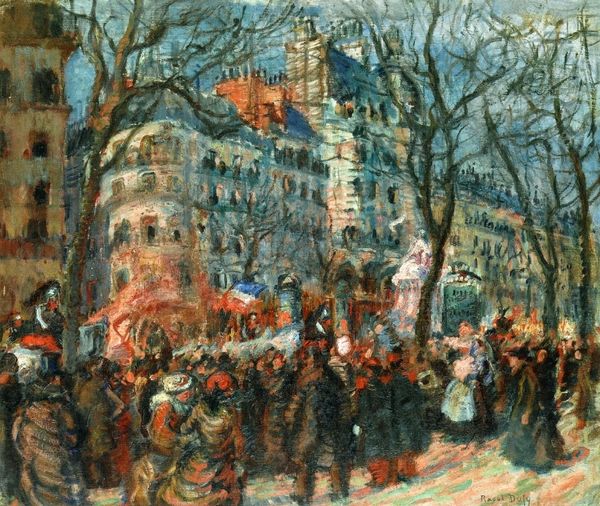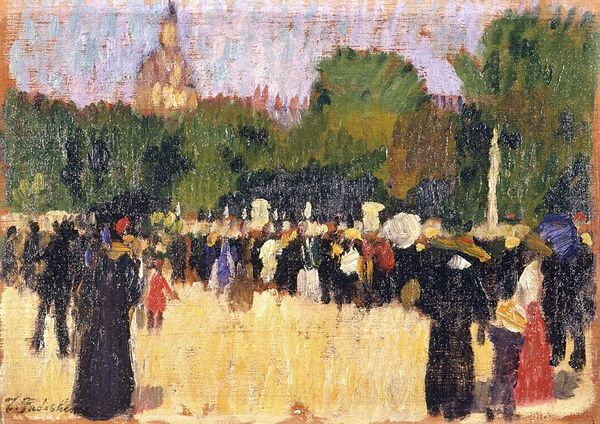
Copyright: Public Domain: Artvee
Curator: Oh, my! Look at that splash of humanity. It feels like you could reach out and get swept up in the crowd. Editor: That's the magic of it, isn't it? We're looking at William Glackens' "Parade, Washington Square," painted in 1912. He captures New York with such immediacy, it’s almost reportage, though imbued with Impressionist flair. Curator: Reportage with soul! All those tiny flags...they give me this feeling of optimistic chaos, a real buzz of immigrant energy bubbling up. The palette, it’s grounded, earthy but dotted with bright dashes that really lift it. What's your take on it? Editor: Glackens belonged to the Ashcan School, known for depicting everyday urban life, especially the lives of working-class New Yorkers. "Parade" moves beyond their usual gritty realism, almost celebratory despite showing a clearly demarcated slice of social life. I see more complexity at play; for instance, in this particular artwork, the painting is framed almost entirely by a tree in a slightly subdued shade. Curator: The tree is kind of holding everything in place. Rooted, yet still, a witness to all the human movement. Were parades like this common then? Editor: They were. Mass demonstrations were integral to shaping public opinion and celebrating identities. Given the time frame and context, and those very prominent Italian flags, one might infer that this depicts an Italian American cultural celebration, perhaps even connected to labor movements or early expressions of cultural pride in the face of discrimination. Curator: Right, a statement of belonging. It is quite subtle in its execution, too; there are no clear portraits or characterizations; only, like the feeling of a crowd, is the message. Editor: Yes, Glackens distills a moment of civic engagement into something both fleeting and enduring. It's about more than just the event itself; it's about the collective spirit. Curator: Absolutely. When I look at paintings such as these, I see that what it shows transcends into a collective moment in a community—an emotion more than an actual event. Editor: And there it is: history told through a lens of a shared feeling. Curator: Thanks to Glackens’ skill and perspective.
Comments
No comments
Be the first to comment and join the conversation on the ultimate creative platform.
